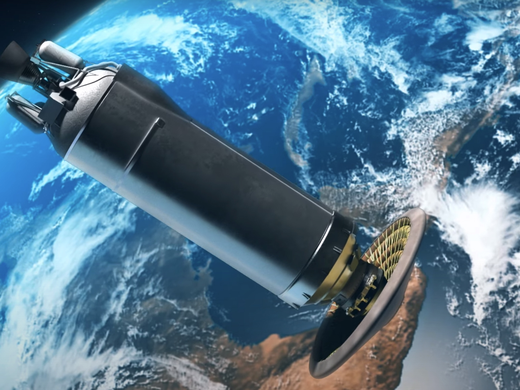In the days leading up to the launch of Apollo 11, which would carry three American astronauts to the Moon in 1969, hundreds of mostly Black protesters gathered outside the Kennedy Space Center in Florida. Led by civil rights leader Ralph Abernathy, and accompanied by a few mules and a wooden wagon to illustrate the contrast between the realities of poverty and a billion-dollar space program, the protesters questioned whether it was right to send men to the Moon while millions of Americans lived and died in preventable squalor.
When National Aeronautics and Space Administration (NASA) administrator Thomas Paine came out to meet them, Abernathy made three requests: support the movement to combat the nation’s poverty, hunger and other social problems; provide technical staff to help tackle hunger; and allow 10 families from the group to watch the Apollo 11 launch from the VIP viewing area. After Paine agreed to all three, Abernathy said he was proud of the Apollo program, prayed for the safety of the astronauts, and added, “What we can do for space and exploration, we demand that we do for starving people.”
This was neither the first nor the last time NASA would be confronted with a moral challenge. However, the protest did provide a clear illustration of the tension NASA continues to face: while often the target of protest and debate, the organization lacks robust internal capacity to engage with fundamental moral questions about space activities. NASA is mission-oriented, responsible for the engineering and logistical challenges of getting payloads and people into space — not for fielding questions about whether to go to space at all, what activities should be permitted and prohibited once there, and how the benefits and risks of space activities should be shared.
But that may be changing.
What is a fair distribution of the benefits and risks of the Artemis and Moon-to-Mars programs? What environmental harm and contamination might emerge, and how can activities be conducted sustainably?
Exploring Space for Ethics
This past September, NASA’s Office of Technology, Policy, and Strategy (OTPS) released a summary report of a workshop held in April on the ethical, social and legal implications (ESLI) of the Artemis and Moon-to-Mars missions. Recognizing that “NASA has not…systematically addressed the societal and ethical implications of human exploration,” the OTPS convened 55 experts from a range of academic disciplines and non-governmental organizations, as well as NASA technical staff and management, to address two key questions: How should NASA consider the ethical, legal and societal implications of the Artemis and Moon-to-Mars efforts? And what are the key ethical and societal implications that require consideration?
The report’s authors emphasize that “including ethical and social considerations in Artemis planning will improve the likelihood that the future we create is one where humanity collectively wants to live.” This likely reflects a sincere commitment to normative ideals of using outer space for peaceful purposes and ensuring responsible behaviour — ideals articulated in NASA’s Moon to Mars Objectives report. At the same time, there may be strategic benefits. NASA and space activities generally have faced fluctuating and unpredictable public support since the 1950s; engaging with ethical and social concerns raised by people outside the space sector may help improve public sympathy.
Exploring Ethics for Space
The workshop participants raised, although did not always answer, key questions the Artemis and Moon-to-Mars missions will confront in the coming years: What is “responsible behaviour” in space exploration? How exactly should NASA work to the “benefit of all [humankind]”? What is a fair distribution of the benefits and risks of the Artemis and Moon-to-Mars programs? What environmental harm and contamination might emerge, and how can activities be conducted sustainably? Some participants also asked how, if at all, we might reconcile ambitions to explore and exploit the Moon, Mars and other celestial bodies with the fact that certain cultures view these sites as sacred and, thus, some space activities as profane.
These issues have been the focus of a community of philosophers, social scientists, activists and others who work largely outside or at the margins of the organizations that comprise the operational frontier of the space sector. What is especially significant is that these questions were posed at a NASA-organized workshop with technical staff and management engaging directly with the space ethics community. And OTPS was listening for ways to incorporate and build on the workshop’s insights in a more sustained way. For these reasons, the initiative marks a positive step toward better integrating ESLI into planning and operations.
Barriers to Ethical Engagement
Where the workshop report is particularly illuminating is in the discussion of barriers to fruitful dialogue about ethical issues, and to integrating more deliberation into institutional choices.
Participants highlighted cultural challenges, including how the “vastly different languages” of social scientists and humanities scholars on one side, and engineering and technical staff on the other, make discussion hard. While many NASA engineers and managers lack “a framework to engage on these ethical issues,” some in the social sciences and humanities lack “context for how decisions are made internally at NASA.” Moreover, while NASA and other space-related organizations have cultures that prioritize “moving forward efficiently,” ethical deliberation requires a slower pace to enable “more careful reflection and public engagement.”
In terms of practical challenges, participants observed that resource scarcity might impair more sustained and embedded deliberation. NASA is arguably already underfunded. Allocating resources to ESLI activities would put additional pressure on budgets. There is also a problem of diffuse responsibility and control. NASA is just one of many sites of decision making associated with the Artemis and Moon-to-Mars programs. Even if the agency embraces ESLI activities, many decisions and responsibilities rest with actors outside its authority, including the Federal Aviation Administration (with its licensing authority for launch and re-entry vehicles) and hundreds of international and industry actors.
Recognizing that the barriers will be difficult to overcome, workshop participants offered some ideas and models on how to address them. In addition to recommending more opportunities for technical staff and management to meet with social scientists and humanities scholars to discuss ethical issues, some participants suggested NASA create standing advisory committees, explore ways to embed ethical issues and metrics into strategic plans and performance reporting, and allocate funds for ESLI research and capacity building. A few participants also pointed to models that NASA might emulate, including the US Human Genome Project and the European Commission’s Responsible Research and Innovation program — both of which allocate significant funding to ESLI research and support expert and public deliberation on ethical issues.
Throughout the 1970s, NASA sought ways to use its technologies and expertise to address poverty, inadequate housing and other socio-economic challenges.
Integrating Ethics
Following Abernathy’s protest at the Kennedy Space Center and the successful completion of the Apollo 11 Moon landing in 1969, some NASA engineers tried to make good on Paine’s promises. Throughout the 1970s, NASA sought ways to use its technologies and expertise to address poverty, inadequate housing and other socio-economic challenges. For example, it looked to adapt technologies to measure urban air pollution and improve materials used to build public housing. Part sincere attempt to make a difference and part strategic effort to address the space program’s plummeting popularity, the work “ultimately failed to improve daily life for African American[s]” and, according to historian Neil Maher, was “more of an advertising effort.” NASA’s mandate, structure and shrinking budget pulled its focus back to operational issues.
With the Artemis, Ethics and Society report and workshop, NASA now has an opportunity to renew ethical reflection on space activities. In its official contribution to the report, OTPS points to its future plans, including considering ESLI in an upcoming study of policy questions related to the Artemis III mission to land humans on the Moon, and “formulating ways to converse on these topics with NASA’s international partners.”
While these are promising signs, the plans are far from the level of ethical engagement needed. Moreover, OTPS offers few clues about how or whether NASA will address cultural and practical barriers to reflection, nor on strengthening NASA’s internal capacity for ethical reflection. In that case, it remains to be seen whether the Artemis, Ethics and Society initiative represents a first step toward long-term institutional engagement or an isolated event, after which ethics will move back to the margins.



